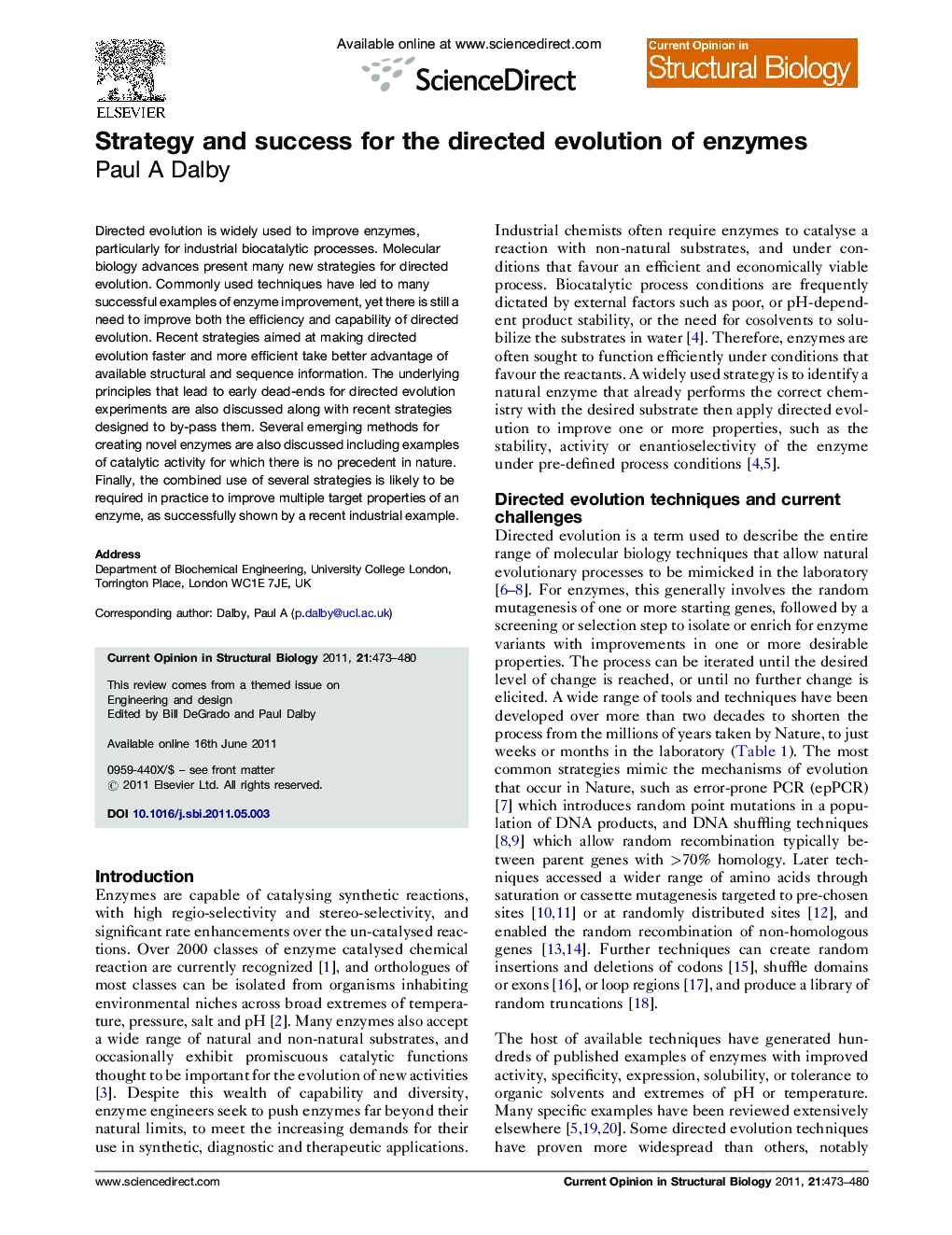| Article ID | Journal | Published Year | Pages | File Type |
|---|---|---|---|---|
| 1979328 | Current Opinion in Structural Biology | 2011 | 8 Pages |
Directed evolution is widely used to improve enzymes, particularly for industrial biocatalytic processes. Molecular biology advances present many new strategies for directed evolution. Commonly used techniques have led to many successful examples of enzyme improvement, yet there is still a need to improve both the efficiency and capability of directed evolution. Recent strategies aimed at making directed evolution faster and more efficient take better advantage of available structural and sequence information. The underlying principles that lead to early dead-ends for directed evolution experiments are also discussed along with recent strategies designed to by-pass them. Several emerging methods for creating novel enzymes are also discussed including examples of catalytic activity for which there is no precedent in nature. Finally, the combined use of several strategies is likely to be required in practice to improve multiple target properties of an enzyme, as successfully shown by a recent industrial example.
► Many optional strategies are available for directed evolution of enzymes. ► Improved returns on library size are gained by mutagenesis targeted to key residues identified by analysis of biochemical, structural or sequence alignment data. ► Evolutionary limitations due to activity-stability trade-offs can be avoided by evolving separately for stability, or by eliminating destabilising mutations. ► Novel catalytic activities are now possible to create using rational design, selection from large mRNA display-based libraries, and also by computational design.
